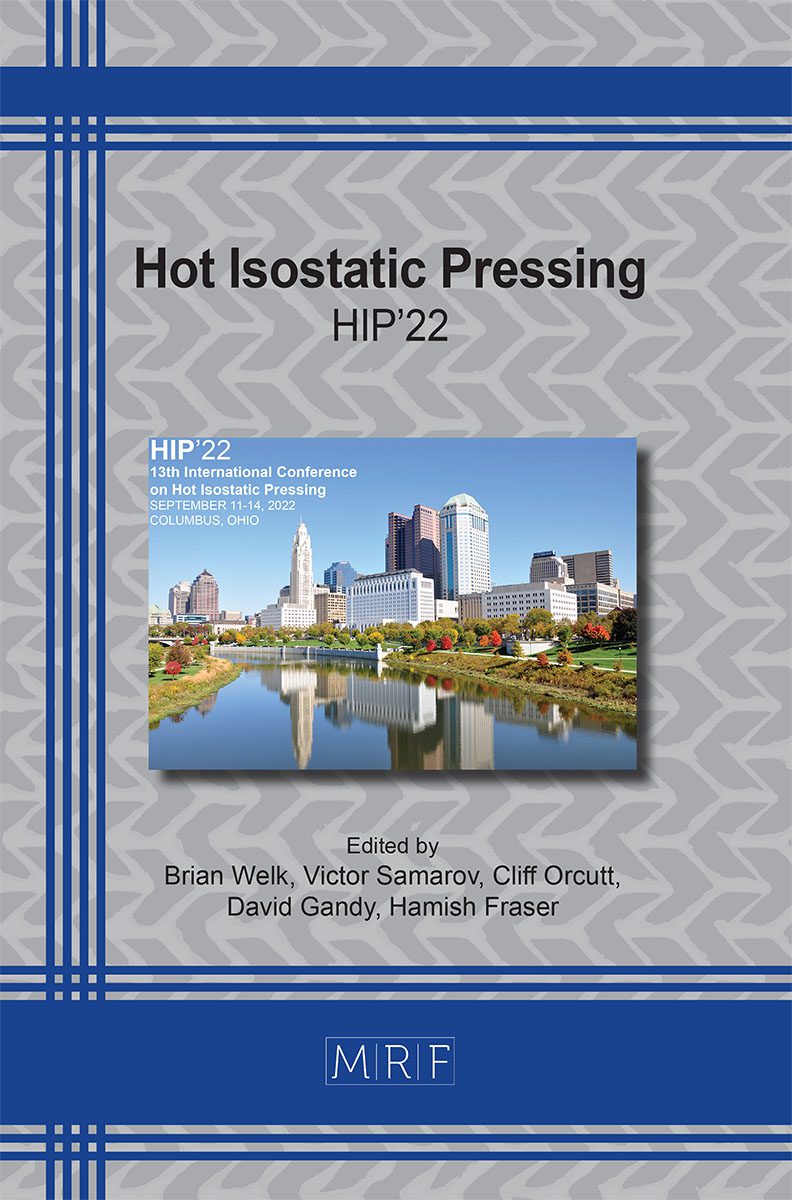HIP Modeling and Design of Large Complex Shape Parts Close to the Size of the HIP Furnace Accounting Capsules Manufacturing Technology and their Movement Inside it During the Cycle
Dmitry Seliverstov, Evgeny Khomyakov, Alex Bissikalov, Victor Samarov
download PDFAbstract. The size of the parts needed to be HIPed for critical applications, especially in nuclear, is growing and very often the HIP capsules become so large that they take not only the entire diameter of the HIP furnace, but almost all its volume. Often, these parts weigh thousands of pounds, do not have axial symmetry and cannot stand by themselves in the furnace requiring complex shape supporting frames. For such parts additional problems need to be solved in the HIP tooling design and HIP process itself due to: (1) difficulties in maintaining dimensional accuracy, (2) non-uniform temperature field inside the HIP during heating and ramping the pressure, (3) different mechanical properties in HIP capsule elements and (4) HIP capsule movement during deformation inside the supporting frame. HIP modeling allows to approach these problems. Several examples of the solutions allowing HIPing of complex shape non-symmetrical parts up to 70″ in size are analyzed.
Keywords
HIP Modeling, Large Complex Shape Parts
Published online 12/8/2023, 6 pages
Copyright © 2023 by the author(s)
Published under license by Materials Research Forum LLC., Millersville PA, USA
Citation: Dmitry Seliverstov, Evgeny Khomyakov, Alex Bissikalov, Victor Samarov, HIP Modeling and Design of Large Complex Shape Parts Close to the Size of the HIP Furnace Accounting Capsules Manufacturing Technology and their Movement Inside it During the Cycle, Materials Research Proceedings, Vol. 38, pp 166-171, 2023
DOI: https://doi.org/10.21741/9781644902837-23
The article was published as article 23 of the book Hot Isostatic Pressing
![]() Content from this work may be used under the terms of the Creative Commons Attribution 3.0 license. Any further distribution of this work must maintain attribution to the author(s) and the title of the work, journal citation and DOI.
Content from this work may be used under the terms of the Creative Commons Attribution 3.0 license. Any further distribution of this work must maintain attribution to the author(s) and the title of the work, journal citation and DOI.
References
–












